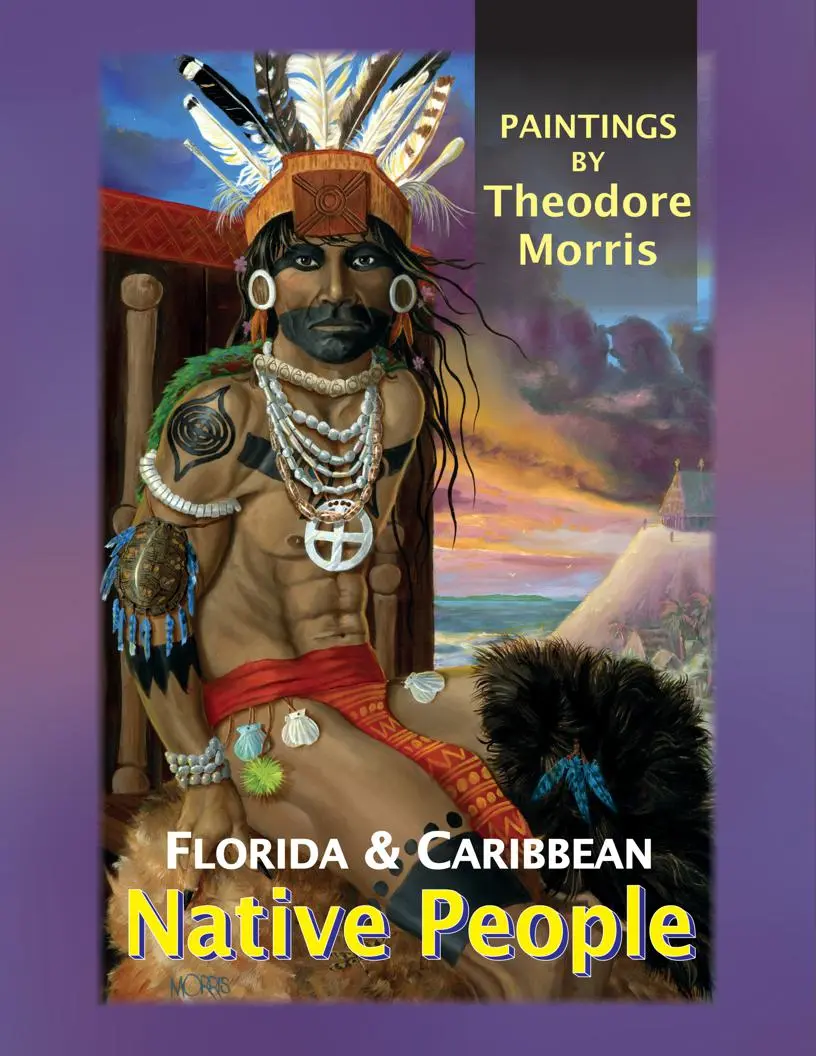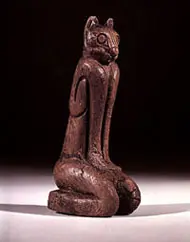When Juan Ponce de León “discovered” Florida in 1513, native people had been living here for more than 10,000 years.
The native population had complex societies, elaborate systems of trade, and their own ancient religions. They had villages with large ceremonial centers surrounded by buildings built on shell mounds. Villages throughout this land had council houses built of wood and thatch that could hold more than 1,000 people.
At the time of European contact, there were a dozen tribes in “La Florida” with their own distinctive cultures.
While many of Florida’s tribes were sophisticated hunters and fishermen, the Apalachee in the Panhandle were accomplished farmers. They grew corn, beans, pumpkins, and other crops. The Apalachee food storage system was so effective that when the Spanish came to that region, they found enough food to feed hundreds of people and horses for many months.
The Timucua people formed a confederation of more than 40 powerful chiefdoms. The Timucua territory stretched from the east coast of north Florida far down into central Florida. When Ponce de León first set foot on this land, 200,000 Timucua lived here. They had the Bear Clan, the Quail Clan, the White Deer Clan, and many others. The children belonged to their mother’s clan and had to marry outside of their own clan, which united the society and promoted peace.
It was the Ais people that Ponce first encountered as he made stops along the Florida coast in 1513.
Ais villages could be found throughout what is now Brevard County. Their territory began north of today’s Titusville and continued down the east coast all the way into present-day Martin County. When a small group of Ponce’s men came ashore, the Ais gave them a greeting that let them know they were not welcome.
The people living around what is now the Tampa Bay area were known as Tocobaga. They were skilled fishermen and hunters. The Tocobaga did some farming as well, creating a tool for digging called the adz by tying a shell to a curved branch.
The Calusa Indians in southwest Florida had a powerful chief who lived at what we call Mound Key. This great chief demanded tribute from the leaders of other tribes, including the Mayaimi, Tequesta, and Jaega in south Florida, and perhaps even the Ais on the central east coast.
The Calusa territory encompassed most of southwest Florida, from present-day Charlotte Harbor to the Florida Keys. They built a canal system on the island of Mound Key where they had temples and other important buildings. Like many other people of this land, the Calusa depended heavily on fish and shell fish for their existence, but developed a trade system with inland people.
Frank Hamilton Cushing’s archaeological excavations at Key Marco in 1896 demonstrate that the Calusa were creative people, making colorful masks for use in their religious ceremonies and carving unique works of art.
One of the most intriguing Calusa artifacts is a mysterious six-inch wooden carving of a kneeling feline figure known as the Key Marco Cat.
It was the Calusa who put a stop to Ponce de León’s exploits in Florida. When Ponce came back to Florida in 1521 with the intention of establishing a permanent colony here, the Calusa attacked the Spanish crew. Ponce was wounded and taken to Cuba where he died.
Ponce’s death did not stop the Spanish, or the French and British who followed.
Over the next century and beyond Europeans worked to change Florida’s native cultures by making them abandon their ancient religions and accept Christianity. They enslaved and killed native Floridians by the thousands. Finally, the unfamiliar diseases the Europeans brought to the “New World” proved to be too much for the indigenous people to fight.
In the centuries following European contact, the great native societies of Florida collapsed and the people disappeared. Those last remaining were probably absorbed into other Native American groups such as the Seminoles, who arrived in Florida from the north in the 1700s.
When Ponce de León came here in 1513, it was the beginning of an exciting new era in Western culture, but the beginning of the end for Florida’s indigenous societies.
Dr. Ben Brotemarkle is executive director of the Florida Historical Society and host of the radio program “Florida Frontiers,” broadcast locally on 90.7 WMFE Thursday evenings at 6:30 and Sunday afternoons at 4:00, and on 89.5 WFIT Sunday mornings at 7:00. The show can be heard online at myfloridahistory.org.

